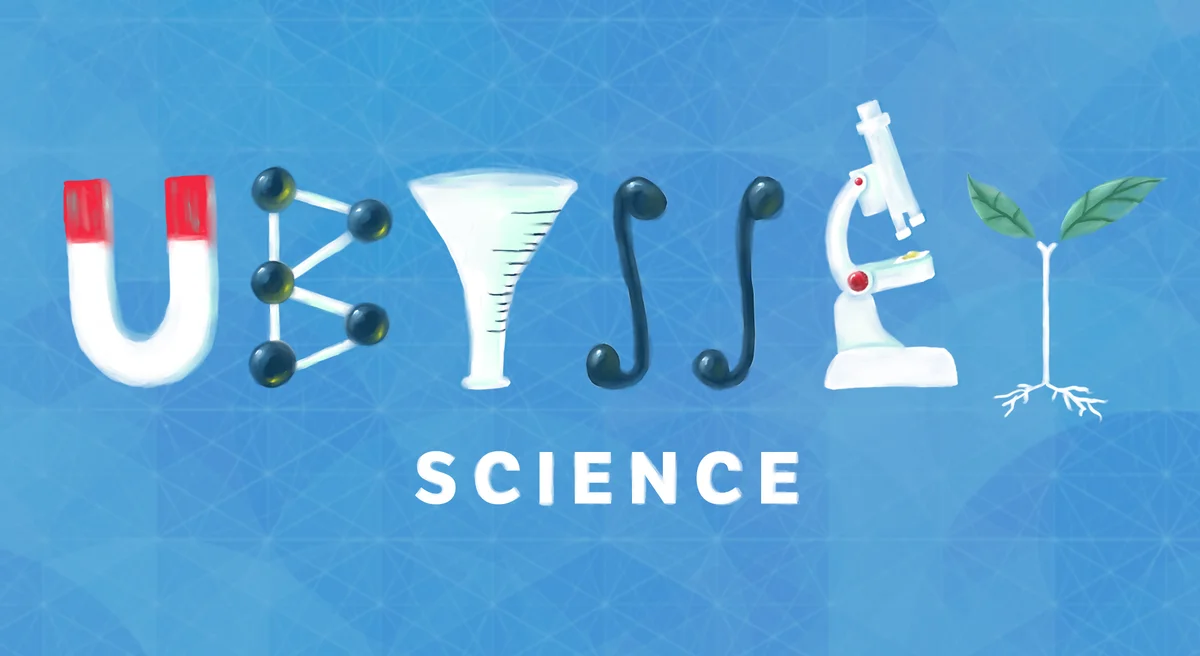
Somehow it is already April and another year has passed — our first full academic year here at The Ubyssey science section.
We've rounded up the top 10 most-read science section stories since May 1 of last year. Perhaps unsurprisingly, space-based stories dominate the list as do drug-related stories (yes, caffeine is a drug and it is addictive). But how a story about math is the most-read of the year is a surprise to all of us.
What was your favourite story of the year?
10. UBC grad Michelle Kunimoto named to Forbes 30 Under 30 by Jack Hauen
Kunimoto discovered four planets outside our solar system that NASA had missed by pouring over the space agency's data. She made the discovery in her undergrad while doing research in UBC astronomy professor Dr. Jaymie Matthews' lab. The discovery was enough to land Kunimoto a spot on Forbes' 30 Under 30 science list.
9. What does science have to say about abortions? by Koby Michaels
The abortion debate made its yearly, heated visit to campus, so we revisited our reporting from last school year. We talk to UBC professor and family physician Dr. Wendy Norman about what an abortion actually is and some common myths surrounding the procedure.
8. Shrooms 101: A beginner's guide to magic mushrooms by Arianna Leah Fischer
What a surprise, a story about drugs got a lot of views. We take a deep dive into the world of psychedelic mushrooms — how do they work, what is in them, are they really as safe as everyone says they are? (Hint: no.)
If you're thinking of taking a trip or just want to learn a little about the mysterious fungi, start here.
7. UBC students win three of five STEM Spotlight awards by Barbara Neto-Bradley
UBC students Austin Molby, Alexander Proskiw and Ryan Hirakida each won an award in the inaugural STEM Spotlight Awards. The competition is split into five categories — energy, infrastructure, sustainability, technology and transportation — and competitors must find a solution to a challenge in their chosen category. The best solution wins. Molby won the energy category, Proskiw won the infrastructure category and Hirakida won the transportation category.
6. Coffee does more than give you energy by Michelle Kim
Hint: it makes you poop. Find out what else all the sweet, sweet caffeine you are currently soaking up through a central line does to you and how it does it.
5. UBC student Ann Makosinski named to Forbes 30 Under 30 list by Koby Michaels
Another UBC student, another Forbes 30 Under 30 winner and another top 10 Ubyssey science story. Makosinski was named to the list in the energy category. She is the creator of the eDrink and Hollow Flashlight. The eDrink is a coffee mug that uses the excess heat of hot drinks to charge your phone. The flashlight uses the heat of a human hand to power a small LED flashlight.
She's also founding a company, is working on a book and is finishing up her second year in UBC's English department.
4. New dwarf planet found near Neptune with UBC's help by Joshua Azizi
In July, it was announced that the Canada-France-Hawaii Telescope (which sits at the summit of Mauna Kea in Hawaii) found a new dwarf planet. The dwarf planet is called 2015 RR245. It is about a third as big as Pluto (also a dwarf planet, whether you like it or not) and a tenth of the size of Earth.
3. NASA and UBC team up to map an asteroid with lasers by Jacob McFarlane
Space makes yet another appearance on this list — this time with rocket ships, lasers and asteroids (but no Bruce Willis or an Aerosmith soundtrack). UBC planetary geophysicist Dr. Catherine Johnson and her lab were involved in building OSIRIS-REx's Laser Altimeter (OLA) — a tool that “will map the asteroid shape in unprecedented detail, down to a resolution of a few centimetres,” according to Johnson.
Bennu, the asteroid OSIRIS is visiting, is classified as “high-risk” for collision with Earth in the 22nd century. We might need Willis after all.
2. UBC student discovers four new planets that NASA missed by Jack Hauen
Kunimoto makes yet another appearance on this list — for the original article on her discovery of exoplanets. At this point, we should start paying Kunimoto for keeping readers engaged with the science section.
1. Professor wins award for equation that is beyond its time by Koby Michaels
Apparently math is cool for the first time since... ever? The most-read story of the year, with over 12,000 unique views, was about UBC math professor Dr. Stephanie van Willigenburg winning the 2017 CMS Kreiger-Nelson Prize, an award given to outstanding Canadian female mathematicians.
Van Willigenburg won for her work helping to discover quasisymmetric Schur functions. The functions have implications in theoretical math and it is so ahead of its time, it is still unclear what it can be used used for.


![['']](https://storage.googleapis.com/ubyssey/media/renditions/michelle-kunimoto-ubc.original.jpg)
![['']](https://storage.googleapis.com/ubyssey/media/renditions/jackhauen_abortion_protest-1_1.original.jpg)
![['']](https://storage.googleapis.com/ubyssey/media/renditions/Mushroom_Illustration.original.jpg)
![['']](https://storage.googleapis.com/ubyssey/media/renditions/20170206Choladhorn_Sinarachatanant_.original.jpg)
![['']](https://storage.googleapis.com/ubyssey/media/renditions/20170215-4.original.jpg)
![['']](https://storage.googleapis.com/ubyssey/media/renditions/Ann_Mak_20160225_Jeremy_Johnson-Silvers.original.jpg)
![['']](https://storage.googleapis.com/ubyssey/media/renditions/new_planet_beyond_neptune20160712Alex_Parker_OS.original.jpg)
![['']](https://storage.googleapis.com/ubyssey/media/renditions/Osirirs_NASAKim_Shiflett.original.jpg)
![['']](https://storage.googleapis.com/ubyssey/media/renditions/Willigenburg_koby_michaels_1_of_1.original.jpg)